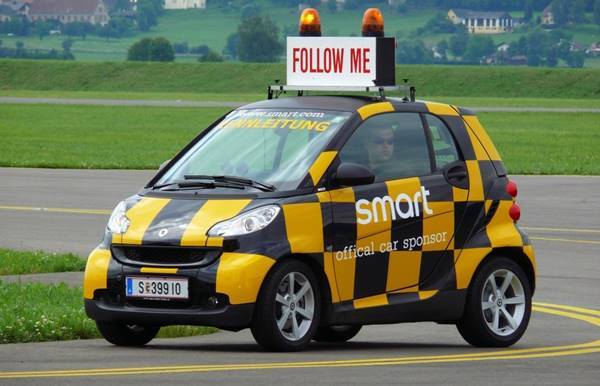Follow Me Vehicles: Improving the Experience at Airports
Follow-me vehicles are integral to airport operations, providing vital assistance in guiding aircraft safely to gates, taxiways, and runways. These specially marked vehicles, often equipped with lights and signage, play a crucial role in improving airport safety, efficiency, and sustainability. Let’s explore how follow-me vehicles contribute to smoother airport functions.
Enhancing Safety
Follow-me vehicles ensure that planes safely navigate busy or unfamiliar airports. Pilots rely on these vehicles, especially when facing complex airport layouts, poor weather conditions, or low visibility. By providing a clear visual guide, follow-me vehicles help prevent runway incursions and misrouting incidents. According to Skybrary, they are often used in low visibility procedures to ensure pilots follow safe paths, especially at large, complicated airports (Skybrary).
Improving Operational Efficiency
Airports handle thousands of flights daily, and follow-me vehicles contribute significantly to maintaining timely operations. By guiding aircraft through optimal taxi routes, they reduce congestion and help avoid delays. This improvement in efficiency benefits both airlines and passengers. For instance, International Airport Review highlights how these vehicles help pilots unfamiliar with a location, ensuring they navigate without errors, which keeps the flow of ground traffic steady and smooth (International Airport Review).

Reducing Fuel Consumption and Environmental Impact
Efficient taxiing also leads to reduced fuel consumption, as aircraft spend less time idling or taking unnecessary routes. This translates to lower operational costs for airlines and a reduced carbon footprint for airports. According to Airport Technology, initiatives to streamline ground operations, such as the use of follow-me vehicles, are an important part of aviation’s effort to reduce emissions (Airport Technology) (IATA).
Enhancing Communication
In addition to guiding planes visually, follow-me vehicles often serve as a backup for communication between air traffic control and pilots. This is particularly useful when radio communication fails or when there are language barriers. They provide a simple, yet effective way of guiding aircraft without relying solely on verbal instructions (Skybrary).
The Crucial Role of Air Traffic Control in Follow-Me Vehicle Operations
Air Traffic Control (ATC) plays a pivotal role in coordinating follow-me vehicle operations, ensuring that aircraft are safely guided across complex airport layouts. ATC is responsible for instructing the follow-me vehicle when to assist an aircraft, particularly in low visibility conditions or when guiding unfamiliar pilots. The vehicle operators maintain constant communication with ATC to avoid conflicts with other aircraft and ground vehicles. ATC provides clearance for follow-me vehicles to enter active taxiways and runways, ensuring that the vehicle’s movements align with the broader air traffic flow (Skybrary) (IATA).
Conclusion
Follow-me vehicles are an essential tool in modern airports. By improving safety, boosting operational efficiency, reducing environmental impact, and enhancing communication, these vehicles ensure a smoother and safer airport experience. Their contribution to reducing fuel consumption and emissions further underscores their role in supporting the aviation industry’s sustainability goals.
By investing in these systems, airports can streamline operations, cut costs, and contribute to global sustainability efforts—all while ensuring the safety of aircraft, crew, and passengers.


